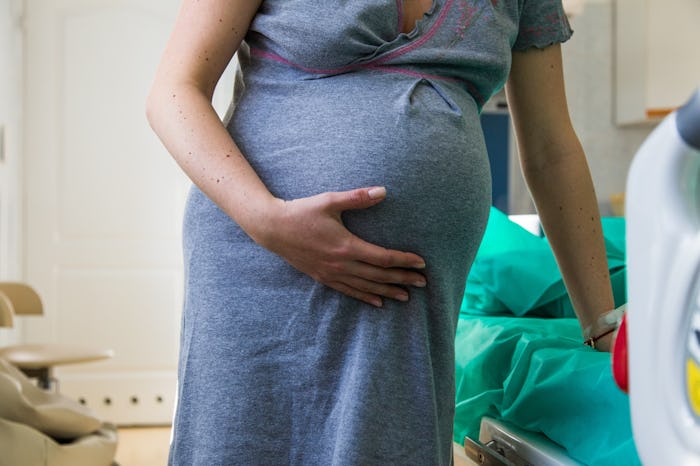Life

The Difference Between Labor & Delivery
When I showed up at the hospital to have my baby, they told my partner and I that once active labor started, they'd move me to L&D. We had no idea what they were talking about, and I was already too exhausted to ask to see a glossary. Later when they wheeled me into a room helpfully labelled, "Labor and Delivery," we figured it out. But what's the difference between labor and delivery?
According to doula and childbirth educator Deena Blumenfeld of Shining Light Prenatal, "in terms of childbirth, labor is what a woman's body goes through as she is getting ready to give birth. Delivery refers to birth itself."
The distinction between labor and delivery is partly historical, Blumenfeld explains to Romper. Before the 1980s, women labored in one room, delivered in another, and recovered in yet a third room. These "rooms" were actually wards shared with many other women, separated by curtains. Hospitals have since transitioned to private rooms that combine categories. I remained in one room throughout my labor, delivery, and recovery, but don't be surprised if you have to switch rooms after the baby's born. Many hospitals prefer to have women recover in separate — but still private or semi-private — areas.
I really enjoyed delivering my baby, but honestly, I could've gone without the labor bit. During labor, your body calls the shots. All you can do is relax and breathe. During the pushing phase, I was finally in control, sprinting hard, and focused on the finish line.
Not all women enjoy this final stage of labor as much as I did. Blumenfeld once worked with a mom for whom the mere thought of pushing her baby out inspired real fear:
When it came time, staff told her she was ready and she said, 'No, I'll wait.' So we waited. Mom asked for quiet and for two hours we waited. When she was finally ready, she pushed slowly and easily and with four gentle pushes her baby was born. She needed that emotional time before birth and she got it.
What exactly happens at the moment of delivery? Blumenfeld explains that procedures vary by hospital, but generally speaking, if both mom and baby are healthy, "the baby will be placed on mom's belly, have his nose and mouth suctioned," and then get a rub down with a blanket or towel to stimulate him and dry any remaining fluids. After one minute, your baby gets her first standardized test — the APGAR, to assess her postpartum health, according to Baby Center. If all's well, she'll be placed on your chest, skin-to-skin.
For me, the transition between labor and actually delivering my baby felt pretty seamless — though I'll never forget the moment my nurse smiled at me, and said I was ready to push. Hospitals use lots of terms, but really, it's all connected: pregnancy prepares your body for labor, labor preps you for delivery, and delivery ushers in a whole new life of sleeplessness and joy.